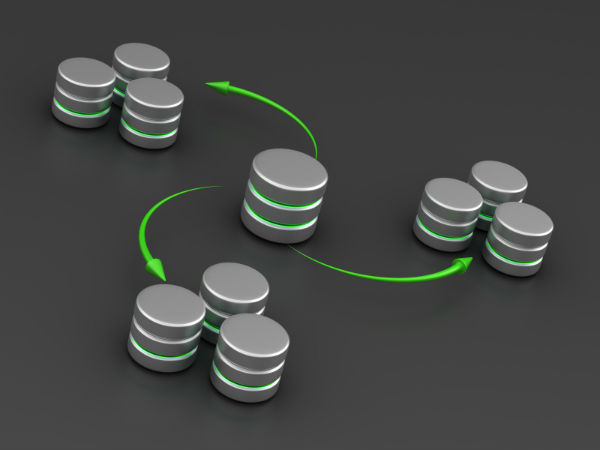Latest Articles
12.21.2012What Can Rendering Service Market Get From Cloud Computing?
12.20.2012Penetrating the Japanese Social Gaming World With the Help of Japanese Social Gaming Companies
12.19.2012Cloud-Based Rendering – the Logical Next Step for Render Farms
Archives

Call 855-466-4678
 As technology becomes more advanced, complexities also have their say in the growth. The situation is not different in the case of cloud computing. Since IT powerhouses as well as even small and medium enterprises are increasingly making their presence felt in the cloud computing sector, operational challenges do pop up frequently, which, if not dealt with immediately could stall your continuity leading to loss of revenue as well as reputation. One of the major challenges faced by enterprises resorting to cloud based business models is migration of key business applications onto the cloud. When CIO’s or managers issue an order asking their staff to migrate a particular app or set of applications onto the cloud, their job is completed by a word or two, but the technical staff has to jump over a China Wall to get things done in time.
This probably explains why a large amount of IT expenditure goes into the process of making applications portable. Here we list some major risks that enterprises face in the event of a cloud migration business strategy and how these issues can be resolved by taking appropriate precautions before the move is made.
Lack of experienced personnel: This is a big drawback as without the service of people who have experience in managing and controlling application portability onto the cloud as well as cloud management skills, your application portability task is bound to be unsuccessful. Porting key business apps onto a cloud would require expertise and precision compared to the human equivalent of a brain transplant and hence there is no room for even the slightest mistake. A solution to this problem would undoubtedly be to recruit only experienced personnel for the job. Not only that, live testing scenarios should be undertaken before deploying them for duty in addition to providing them with training and reference material.
Handling confidential enterprise data: The internet is a playground for malicious software, viruses, illegal bots, etc. and hence migrating crucial business data and applications to an internet-based business model like cloud computing requires extensive preparation and precautions to ensure and safeguard the authenticity of crucial data and prevent it from landing in the wrong hands. The solution would be to maintain a strict security firewall to prevent intrusions. The entire cloud platform should be under constant surveillance and any suspicious events should be traced to its origin and reported to the respective authority.
Involvement of 3rd Party: If IT is not your key competency, then migrating to a cloud-based business environment would require the service of a 3rd party IT solutions provider who has expertise in cloud operations and management. But then this would mean that your businesses key applications as well as mission-critical data would be handled by an external source which increases the risk of data being leaked or lost. The best way to combat this issue would be to choose a premium partner with proven track record in providing cloud based solutions. Check out their previous partnerships and analyse how their solutions reacted to vulnerabilities and threats.
Integration of in-house and cloud applications: The technical integration of data as well as business applications becomes a key issue when enterprises resort to cloud-based monitoring and service. Very often companies prefer to keep a certain amount of applications and data in-house while migrating to a cloud platform. However the migrated applications may have to depend on these in-house data for their operations, which requires a proper integration of both these components that is technically a challenging perspective. A proper scheduling and systematic approach to migration would solve this issue. Identification of dependent systems, calculating impact of migration and planned migration of all relevant systems onto a trusted cloud platform would eliminate the thoughts of concern plaguing enterprises in this regard.
Support for legacy systems: Moving to the cloud ultimately results in change of infrastructure and adoption of new standards of business operations. Newly integrated software platforms as well as hardware components make their way into offices but at the same time, these changes spark another wave of problems because of the need for interoperability of existing legacy systems with these new components. It is a wiser decision to upgrade your legacy systems rather than degrading cloud infrastructure to facilitate interoperability. Aging systems prove to be a damper in cloud performance and efficiency and also create greater workload because of slower processing capability.
Thus the solution for almost all major application migration issues in cloud computing pretty much lies in the hands of enterprises themselves. Taking steps to resolve them at the earliest would only pave the way for greater success within limited time for a whole new cloud based business model.
GMO Cloud takes pride not only in the excellent service they provide but as well as its proven track record. With the introduction of the public cloud offering, additional services - which includes migration - were included to complement and follow through on the core services sold.
As technology becomes more advanced, complexities also have their say in the growth. The situation is not different in the case of cloud computing. Since IT powerhouses as well as even small and medium enterprises are increasingly making their presence felt in the cloud computing sector, operational challenges do pop up frequently, which, if not dealt with immediately could stall your continuity leading to loss of revenue as well as reputation. One of the major challenges faced by enterprises resorting to cloud based business models is migration of key business applications onto the cloud. When CIO’s or managers issue an order asking their staff to migrate a particular app or set of applications onto the cloud, their job is completed by a word or two, but the technical staff has to jump over a China Wall to get things done in time.
This probably explains why a large amount of IT expenditure goes into the process of making applications portable. Here we list some major risks that enterprises face in the event of a cloud migration business strategy and how these issues can be resolved by taking appropriate precautions before the move is made.
Lack of experienced personnel: This is a big drawback as without the service of people who have experience in managing and controlling application portability onto the cloud as well as cloud management skills, your application portability task is bound to be unsuccessful. Porting key business apps onto a cloud would require expertise and precision compared to the human equivalent of a brain transplant and hence there is no room for even the slightest mistake. A solution to this problem would undoubtedly be to recruit only experienced personnel for the job. Not only that, live testing scenarios should be undertaken before deploying them for duty in addition to providing them with training and reference material.
Handling confidential enterprise data: The internet is a playground for malicious software, viruses, illegal bots, etc. and hence migrating crucial business data and applications to an internet-based business model like cloud computing requires extensive preparation and precautions to ensure and safeguard the authenticity of crucial data and prevent it from landing in the wrong hands. The solution would be to maintain a strict security firewall to prevent intrusions. The entire cloud platform should be under constant surveillance and any suspicious events should be traced to its origin and reported to the respective authority.
Involvement of 3rd Party: If IT is not your key competency, then migrating to a cloud-based business environment would require the service of a 3rd party IT solutions provider who has expertise in cloud operations and management. But then this would mean that your businesses key applications as well as mission-critical data would be handled by an external source which increases the risk of data being leaked or lost. The best way to combat this issue would be to choose a premium partner with proven track record in providing cloud based solutions. Check out their previous partnerships and analyse how their solutions reacted to vulnerabilities and threats.
Integration of in-house and cloud applications: The technical integration of data as well as business applications becomes a key issue when enterprises resort to cloud-based monitoring and service. Very often companies prefer to keep a certain amount of applications and data in-house while migrating to a cloud platform. However the migrated applications may have to depend on these in-house data for their operations, which requires a proper integration of both these components that is technically a challenging perspective. A proper scheduling and systematic approach to migration would solve this issue. Identification of dependent systems, calculating impact of migration and planned migration of all relevant systems onto a trusted cloud platform would eliminate the thoughts of concern plaguing enterprises in this regard.
Support for legacy systems: Moving to the cloud ultimately results in change of infrastructure and adoption of new standards of business operations. Newly integrated software platforms as well as hardware components make their way into offices but at the same time, these changes spark another wave of problems because of the need for interoperability of existing legacy systems with these new components. It is a wiser decision to upgrade your legacy systems rather than degrading cloud infrastructure to facilitate interoperability. Aging systems prove to be a damper in cloud performance and efficiency and also create greater workload because of slower processing capability.
Thus the solution for almost all major application migration issues in cloud computing pretty much lies in the hands of enterprises themselves. Taking steps to resolve them at the earliest would only pave the way for greater success within limited time for a whole new cloud based business model.
GMO Cloud takes pride not only in the excellent service they provide but as well as its proven track record. With the introduction of the public cloud offering, additional services - which includes migration - were included to complement and follow through on the core services sold.
 Mandira Srivastava is a fulltime freelance writer who specializes in technology, health and fitness, politics, and financial writing. Equipped with degree of mass communication and having worked for both private and corporate clients, I have experience meeting a wide range of writing requirements and styles.
Mandira Srivastava is a fulltime freelance writer who specializes in technology, health and fitness, politics, and financial writing. Equipped with degree of mass communication and having worked for both private and corporate clients, I have experience meeting a wide range of writing requirements and styles.